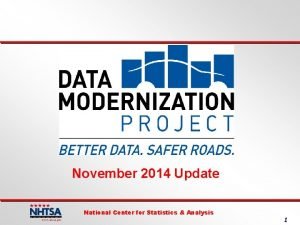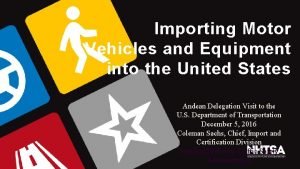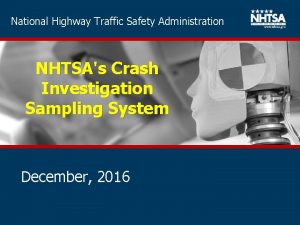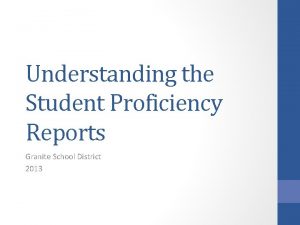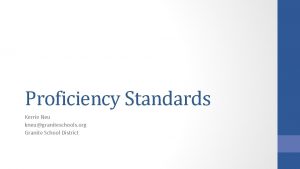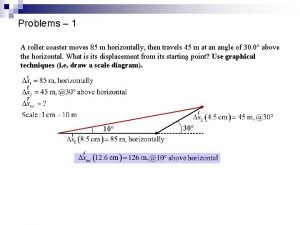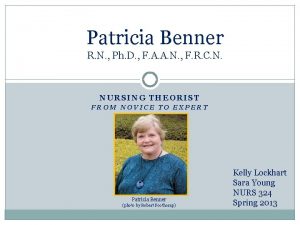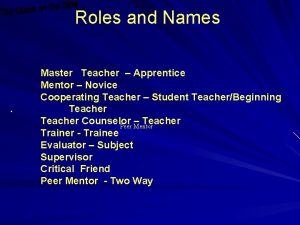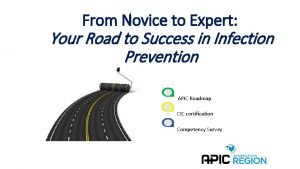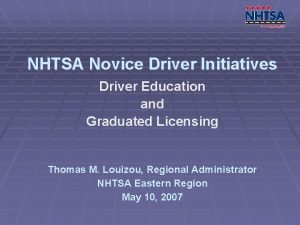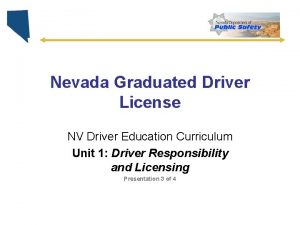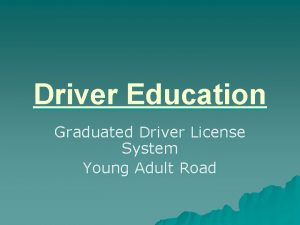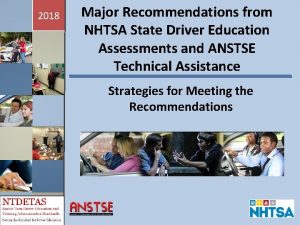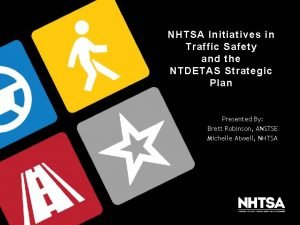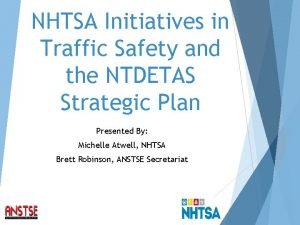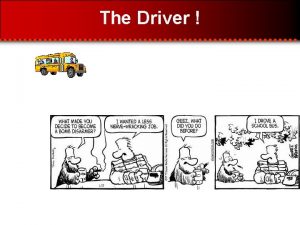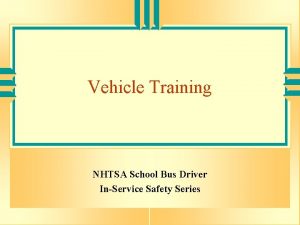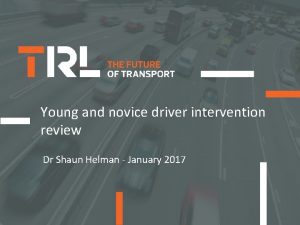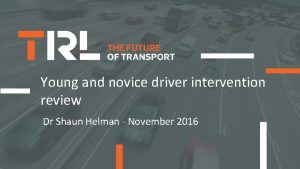NHTSA Novice Driver Initiatives Driver Education and Graduated














- Slides: 14

NHTSA Novice Driver Initiatives Driver Education and Graduated Licensing Thomas M. Louizou, Regional Administrator NHTSA Eastern Region May 10, 2007

Crash involvement per million miles traveled Crash Rate by Driver Age (2001 -2002 GES data; IIHS, 2006)

Driver Death Rates by Age and Passenger Presence per 10 Million Trips, 1992 -97 Source: Chen et al. (2000)

Fatal Crash Involvement, Day vs. Night (IIHS, 2001 -2002)

16 -20 Year Old Alcohol Involved Fatalities 2000 -2005

Crash Rates are Highest … § During the first few months/miles of driving § At night § With teenage passengers § With alcohol

Graduated Driver Licensing § 45 States, DC and PR § All have 3 -stage systems with most model components, although none has all components § Detailed list of State laws can be found at www. iihs. org § Common restrictions include: § limiting passengers, nighttime driving and cell phone use § Safety belt requirements § Zero tolerance alcohol restrictions

How Effective is GDL, and Why? State Florida Crash Reduction 9% Michigan 26% North Carolina 25% Oregon 16% Nova Scotia 24% Ontario 31% § Expands the learning § § § process Reduces risk exposure Improves driving proficiency Enhances motivation for self-driving

Driver Involvement Rates (Ages 15 -17) Drivers Involved in Fatal Crashes Per 100 K Population 2001 - 2005 50. 00 45. 00 IIHS Rating of GDL Components 40. 00 - Good - Fair 35. 00 - Marginal - Poor 30. 00 25. 00 20. 00 NJ 15. 00 10. 00 MS SD MO KY AL DE KS AR ID WY OK MT TN NE NM ND SC GA WV IN IA NC CO VT LA WI FL MN AZ ME TX MI NV UT OH VA IL PA AK MD OR NH RI DC WA CT HI CA MA NY NJ 5. 00 NHTSA, NCSA Information Services Branch; U. S. Census Bureau; IIHS

NHTSA Efforts § Will convene an expert working group to develop national standards on driver ed and a national conference to consider consensus recommendations § Continues to conduct extensive research into GDL, Driver Ed, and related issues

NHTSA State-Specific Research • Oregon: GDL Program • Texas: Parent-Taught driver ed § Parent-taught drivers are at a greater risk for crashes/injuries • Wisconsin and Tennessee: GDL & belts • Massachusetts: PC-based risk awareness training • Georgia: TADRA Act § 16 -year-old driver crash rates declined by 36. 8% in 5+ years since enactment • Michigan: GDL Program • Arizona: Social Norms & Teen Belt Use

Other NHTSA Research • • • Evaluation of passenger restrictions National GDL evaluation Process evaluation of Drivers Ed in the U. S. Feasibility Study - Evaluating Driver Ed Evaluation of “Driver’s Edge” Next Generation Driver Ed

Summary § Young driver fatal crash rates are very high § States vary widely with respect to crash rates § § and quality of laws GDL laws are effective in reducing crashes There is a relationship between low rates and strong laws There is limited research on impact effectiveness of driver education NHTSA has existing and planned products and activities to assist States

For more information: www. nhtsa. gov region 2@dot. gov 914 -682 -6162
 Nhtsa data modernization
Nhtsa data modernization Nhtsa registered importers
Nhtsa registered importers Nhtsa tesla
Nhtsa tesla Nhtsa ciss
Nhtsa ciss Digital initiatives in higher education
Digital initiatives in higher education Novice intermediate advanced
Novice intermediate advanced Novice intermediate advanced
Novice intermediate advanced A football player runs directly down the field for 35 m
A football player runs directly down the field for 35 m Patrizia benner
Patrizia benner Benners nursing theory
Benners nursing theory Patricia benner novice to expert model
Patricia benner novice to expert model Novice apprentice
Novice apprentice Novice audience
Novice audience Novice example
Novice example Apic novice roadmap
Apic novice roadmap
